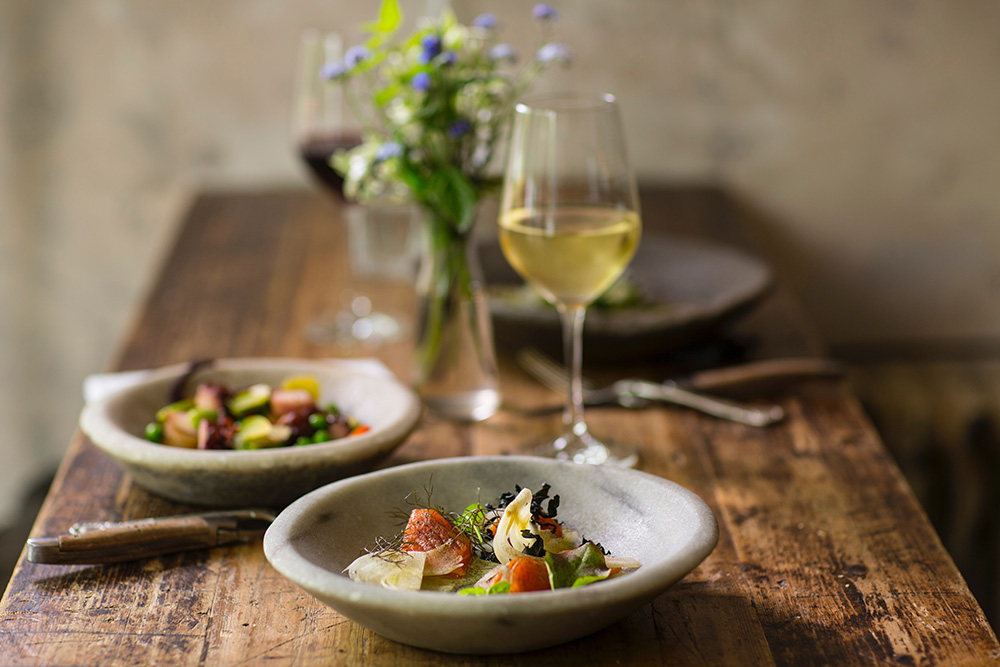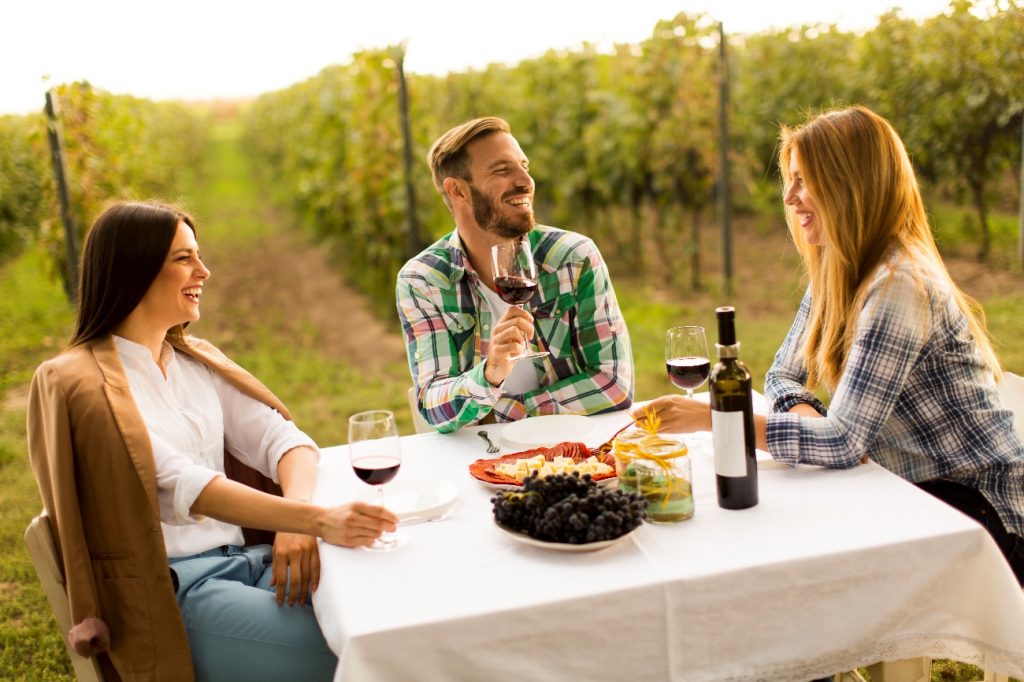Wine pairing means union, the alliance that is established between a wine and a certain food in which both parties gain by producing a range of sensations that range from the simplest to the truly unforgettable.
Before eating (aperitifs), cold wines or wines with character are usually taken and in small quantities so that the palate concentrates on the dishes that will arrive later, a champagne or a light white wine are ideal.
The occasion can greatly influence the wine, in summer we let ourselves be tempted by fresh and fruity white wines, while in winter we prefer the warmth of a robust red or a white with character.
Wine pairing
With a red wine almost everything is allowed, usually with grilled meats or grilled, with rosé wines we usually opt for Mediterranean and light meals, and with a white wine we focus on fish, seafood and birds. These three “ideal marriages” (“maridaje” in Spanish) are the result of history and customs and are based on three fundamental principles:
Colour: The traditional rule of white wine with fish and red wine with meat obeys the most elementary common sense. A red wine, usually more tannic, can give fish and seafood a metallic taste, in the same way that hunting or dishes with strong flavours annihilate most white wines.
Density: The alcohol content and aromatic concentration of a wine should accompany the taste of a dish, that is, delicacies deserve subtle wines, while strong foods require more powerful wines.
Aromas: Sometimes, a contrast of aromas between wine and food is pleasant (a wine with hints of lemon can accompany grilled or fried fish), but usually harmony is always better.
Tips on food and wine pairing
There are no definitive formulas or irremovable rules, and that curiosity and the pursuit of pleasure must always prevail, some couples in fact could be the following:
White wines, easy to have with appetizers or very light entrees.
White wines, of greater substance (of noble varieties): White fish, seafood, fresh cheeses, salads, some mousses.
White wines fermented in barrels: Cured cheeses, vegetables, smoked, white meat, some rice dishes.
Rosé wines: Vegetables, pasta, rice, soft cheeses, tortillas, fruit salad.
Young Red Wines: Charcuterie, semi-cured cheeses, blue fish, some white meats, even red roasts, such as goat or lamb. It accepts mushrooms and dishes of salted cod, and in general fish in sauce.
Red Wines of Crianza: Grilled meats, roasts, stews of red meats, cured cheeses, charcuterie.
Red Wines Reserva and Gran Reserva: Hunting dishes and more subtle and elaborate stews.
Sweet wines: Fruit desserts, cakes with nuts and pastry cream. Foie and pates.

White wines, of greater substance (of noble varieties) pairs with white fish, Seafood, fresh cheeses, salads, some mousses.
Temperature of wine
Wines should reach their optimum consumption temperature without suddenness, gradually. In the case of a large red wine, you must remove the bottle from the cellar the day before and leave it for 24 hours standing in a cool place (16-18 ° C). Never put a wine in the freezer, nor a very hot red in an ice bucket. Finally, we must not forget that the wine wins in the cup one or two additional grades, especially if the room is hot.
Young whites: 8º C (72 º F)
Sweet Whites: 6-8º C (68-72 º F)
Whites with barrel: 10-12º C (76- 79 º F)
Rosé / Cava: 6-8º C (68-72 º F)
Young, light reds: 12-14º C (79 – 83 º F)
Powerful reds, with body: 14-16º C (83- 86 º F)
Red with aging (Crianza, Reserva): 16-18º C (86- 90 º F)
